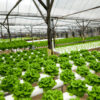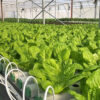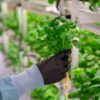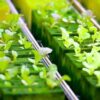Microgreen cultivation in Mumbai is basically greens collected while they are very young, usually when they are only a foot or two tall. These tasty tiny greens may be used for lunches, sandwiches, or stir-fries. Experiment with different combinations, adding the variety you prefer. If you’ve ever bought microgreens, you know they’re not inexpensive. The excellent thing is that the cultivation of microgreens in Mumbai is simple, whether indoors or outdoors. They grow nicely in flowerbeds or containers and can produce a speedy yield with little effort.
Consider Space Needs and Growing Method
You may begin your micro-frame project on a tiny size, in your garden, or on your rooftop, and progressively scale up as your farm expands.
In microgreens farming in Mumbai, you can pick or combine the following two growth methods:
- Hydroponics vertical farming
- Gardening in Containers
- LED illumination for indoor microgreens cultivation
Once you’ve identified your target market in Mumbai, strive to gauge their recurrent microgreens in Mumbai one need in order to maintain an efficient supply chain. Growing requirements in Rajkot will aid in the planning of the necessary microgreen seed variations schedule. Record and manage the progress of several types in order to assess and improve production in Mumbai.
When offering collaborations, make sure your customers recognize the distinction between microgreens and sprouts.
- Harvesting at the appropriate time
- Shelf life of microgreens
- Packaging is essential for preserving freshness.
- Collect necessary equipment
- Begin growing and selling
Before you begin producing microgreens in Mumbai, you need first pick what you want to cultivate. When you initially begin, stick to one or two varieties of seeds. Broccoli, lettuce, radish, cauliflower, spinach, basil, or cilantro are all good options. Next, decide where you want to plant them and what containers you’ll use. Choose a sunny location. Then decide on the type of growth media you wish to utilize. A uniform blend of potting mix and peat moss, or a seed beginning mix, helps keep moisture in the soil.









